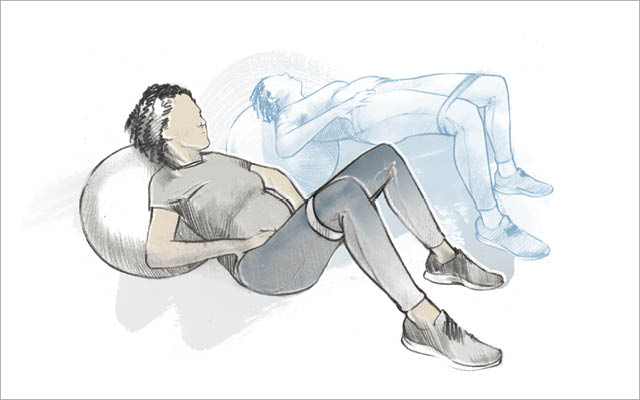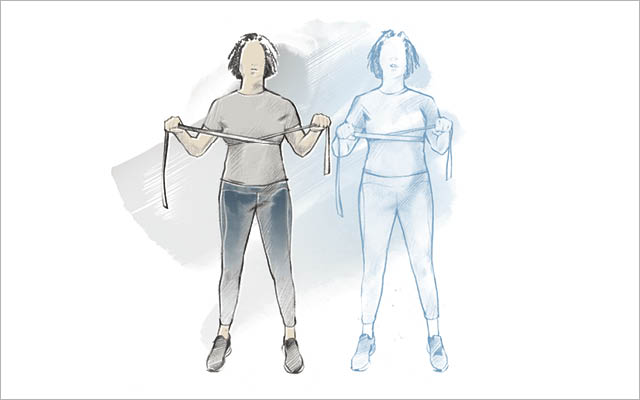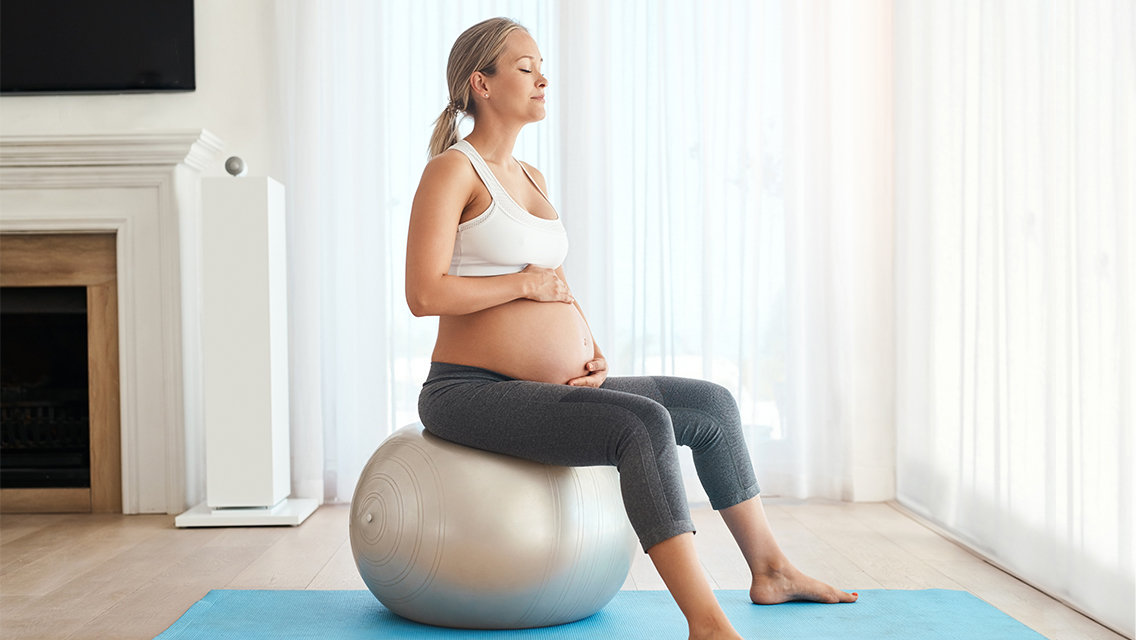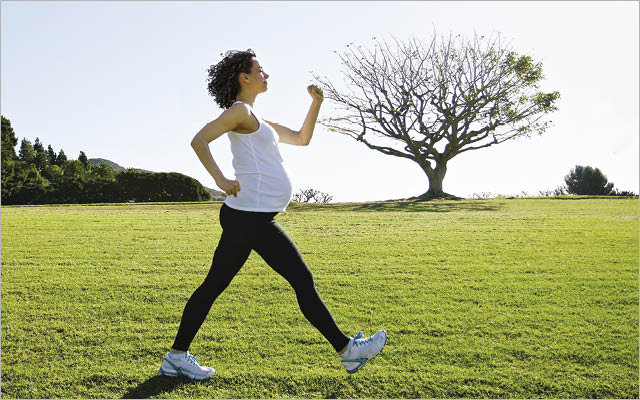Second Trimester: Weeks 13 to 26
Just because you can doesn’t mean you should: Continue to strengthen areas of your body that will support you during and after pregnancy — but beware of pushing too hard.
In the so-called honeymoon trimester, you may start to feel more energetic and less prone to morning sickness.
“The tendency is to think, Oh, I feel good now! and then start pushing boundaries,” says Battles. But this sense of invincibility is what causes some women to overlook signs that they’re doing too much.
“Instead of asking, ‘Could I?’ you need to be asking, ‘Should I?’” says Jessie Mundell, MS, a pre- and postnatal fitness specialist in Alberta, Canada. “You’re really weighing the risk versus the benefit to determine if a movement is good for you.”
Even if you’re feeling great, your body — and the baby’s — is changing drastically. That includes the “belly pop,” when you begin to look recognizably pregnant, and other shifts that need to be navigated.
Beginning now, and continuing throughout your pregnancy, pay close attention to your breathing while you exercise. Focus on the exhale, using it to guide each movement.
You’ll also want to pay attention to your belly and notice if the abdominal wall is straining or bulging, which can be a sign of diastasis recti. This occurs when the linea alba, or connective tissue between your rectus abdominis muscles, starts to pull apart.
Your pelvic floor also changes throughout pregnancy and in the postpartum period. If you are experiencing excess pressure, pain, or the urge to urinate either during or after exercise, avoid that movement or lessen the load.
Maintaining mobility is important, but be aware that the release of the hormone relaxin — which relaxes the ligaments in the pelvis in preparation for childbirth — can cause overstretching and injury. Limit your range of motion to your pre-pregnancy range, even if you feel you can go deeper.
As the growing baby puts more pressure on your abdominal wall and pelvic floor, be especially careful when performing high-impact activities, such as running and jumping, and dynamic moves like Olympic lifts.
Mundell recommends prioritizing glute-based exercises, which can help prevent lower-back and hip pain while also indirectly supporting the pelvic floor by shifting the pelvis into better alignment. “You’re really trying to support the pelvis as best you can by building stability through the trunk region,” she explains.
Strengthening your upper body prepares you for the physical demands of motherhood. Winters advises working the backside of the body with rows and other pulling movements.
The most important piece of advice — now and continuing through postpregnancy — is to immediately stop any exercise that causes pain.
Exercises to Try
TRX Row: This move strengthens the upper back and back of the shoulders, promoting better posture through pregnancy and beyond.
 Illustration: James Carey
Illustration: James Carey- Hold the handles of a TRX or other suspension trainer and lean back with arms straight and palms facing inward. Adjust your feet to find a challenging angle.
- Exhale, then pull both handles toward you, squeezing your shoulder blades together at the end of the movement.
- Inhale as you slowly reverse the movement to return to the starting position.
- Perform three sets of 10 to 12 reps.
Stability-Ball Banded Hip Thrust: This exercise strengthens your glutes, core, and lateral hip muscles to help support the pelvis.
 Illustration: James Carey
Illustration: James Carey- With a flat resistance band around your legs just above your knees, carefully position yourself on a stability ball so that your head and shoulders are on the ball and feet are flat on the floor, with knees bent at 90 degrees.
- Inhale as you lower your hips toward the ground, keeping the ball still.
- From this position, exhale, then drive your heels into the ground to lift your hips, keeping your pelvis neutral: Do not tuck your tailbone as you lift, or squeeze your glutes at the top.
- Perform three sets of 10 to 12 reps.
Breathing With Strap: This move improves expansion of your rib cage, which supports better breathing and also creates more space for baby.
 Illustration: James Carey
Illustration: James Carey- Wrap a yoga strap or tie around your lower rib cage, crossing both ends of the strap in front of you to form an X. Pull the strap tightly against your chest.
- Inhale into the strap, focusing on moving it outward in all directions.
- Exhale and gently lift your pelvic floor, as though you’re trying to stop the flow of urine. You should notice the strap drawing in tighter as your belly tightens.
- Perform one set of 10 to 12 reps.
This originally appeared as “Fit for Two” in the April 2019 print issue of Experience Life.




This Post Has 0 Comments